
T: The NYTimes Style Magazine
Where style meets culture.
Recent Posts

From the outside, @cabanetortin, a cliffhanging cabin in Switzerland’s Canton Valais, looks more like a gondola station than it does a luxury chalet. The three-bedroom fortress of concrete, galvanized steel, chimneys and solar panels sits solitary on a rocky ridge atop the ancient Tortin Glacier at an elevation of 9,500 feet. Its cantilevered glass windows reflect the surrounding pink alpenglow and bluebird skies that the 4 Vallées Ski area — Switzerland’s largest, including Verbier — is known for. Inside, the mind-clearing Scandinavian minimalism of the Norwegian architect Snorre Stinessen focuses on the elements with a blond wood grain ceiling, sauna and log fireplace. Read more about the secluded ski-in property at the link in our bio. Written by @adamgraham. Photo courtesy of @albrechtvoss.
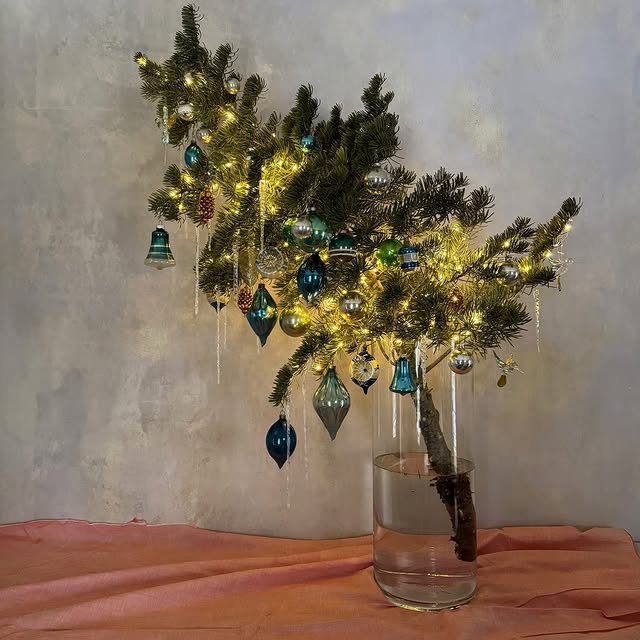
Ahead of Christmas, we asked several design professionals to share how they decorate trees. The interior stylist @martinrbourne likes to save the tops of pines that’ve been mostly eaten by deer. “We pop them in a big vase and let them lean, lights, decorations and all,” he says. Aaron Aujla (@aa_aujla), a co-founder of the furniture and interior design company @greenriverprojectllc, hangs his with marigold garlands and Japanese chenille birds. When the scenic designer Tim McMath (@tdmcma) had a party with the theme “A Very Merry Monster Christmas,” the tree was adorned accordingly. In @beataheuman’s London showroom, the bows and skirt are made of fabric she designed. The set designer Theresa Rivera (@theresariveradesign) decorates hers with grapevine and pampas grasses, as well as winterberries and a few disco balls. For the skirt, she uses fabrics she already owns — this year it was two vintage carpets. Lindsey Chan (@lindscha), a co-founder of the Los Angeles-based interior design studio @officeofbc, says a garland of hearts from the fashion label Dosa is among her favorite additions: “Each heart is hand-stitched and beaded by local women [in Oaxaca], using Dosa’s recycled fabric remnants.” The Parisian interior designer @dorotheemeilichzon likes her conifer to be “colorful and joyful,” and every ornament has a deeper meaning, often representing a friend or family member. The interior designer @antonytodd opted for branches with baubles, while another interior designer, @sallybreer, made decorative fish using cardboard and silver spray paint. “I'm a real believer in making versus buying wherever I can,” she says, “and the holidays are really the best excuse to craft.” Photos courtesy of @martinrbourne, @greenriverprojectllc, @tdmcma, @beataheuman, @theresariveradesign, @lindscha, @dorotheemeilichzon, @antonytodd, @sallybreer. #TRituals
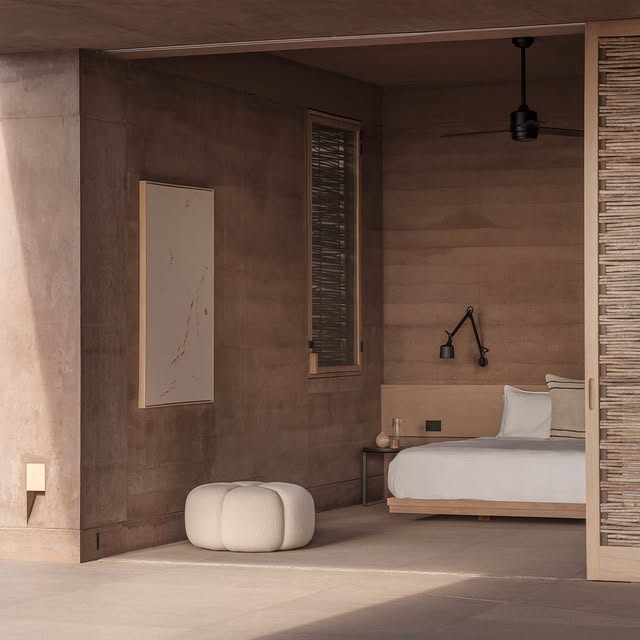
In addition to producing furniture, lighting and home accessories, the Danish brand @Vipp runs nine guesthouses in Europe. As of November, it’s taking reservations for its first property in North America, a five-bedroom home in Todos Santos on the Pacific Coast of Mexico’s Baja California peninsula. Sofie Christensen Egelund, the third generation co-owner of Vipp, was introduced to the region by the Mexico City-based architect Pablo Pérez Palacios (@perez_palacios_aa), who’s behind the property’s design. The 3,800-square-foot home has a rooftop pool and open interiors that highlight natural materials: The walls are made of rammed earth, while window shutters are woven from branches of the local Palo de Arco tree. Furnishings include some of Vipp’s own pieces as well as the brand’s signature kitchen, a modular system with minimalist hardware. Tap the link in our bio to read the full story, written by Natalia Rachlin (@nat_rach). Photos courtesy of @andershviid. #TList
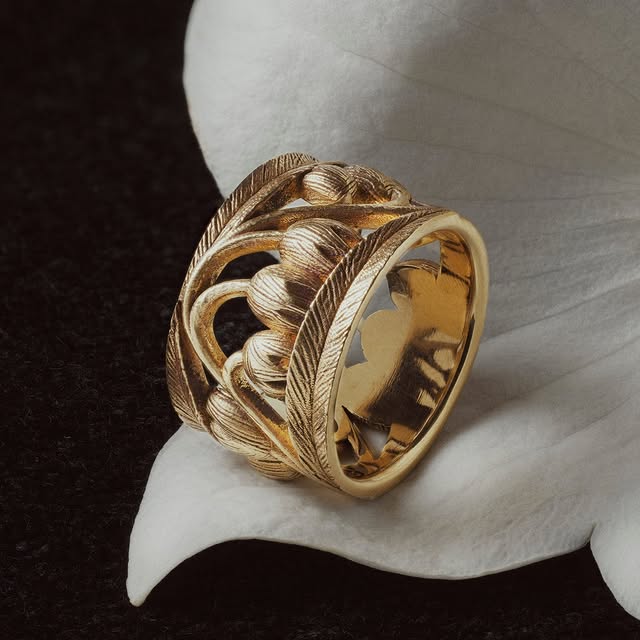
“I grew up around the remnants — gold dust, stones and wax,” Alexis Alexandra Briano (@a.alexandra.jeweler) says of A. Hagosian & Son, the jewelry shop that her grandfather Aram and her father, John, maintained for half a century inside the Sir Francis Drake Hotel in San Francisco. Aram opened the store in the 1930s after having escaped the 1915 Armenian genocide and, especially because of the precarity from which it emerged, Briano didn’t want the business to die with her father. A few years ago, she found a Los Angeles-based goldsmith with the skills to recreate Aram and John’s intricate designs — lost-wax cast, hand-engraved pieces inspired by the work of the 16th-century Italian sculptor and jeweler Benvenuto Cellini, and by the natural world. The result is a collection of eight 18-carat-gold rings featuring wraparound botanical motifs. With their fine etchings and antique finishes, the designs have an old-world appeal, though Briano notes that a band carved with acorns is also “so California.” She sees the project, which she’s named Alexis Alexandra, as a tribute to her family, and yet she also wants to move the story forward. She plans to experiment with her own designs — and with various gems — and hopes, one day, to pass her knowledge down to her daughter. Tap the link in our bio to read the full story, along with the rest of our latest #TList recommendations. Written by Kate Guadagnino (@k_guad). Photos courtesy of @romainroucoules.
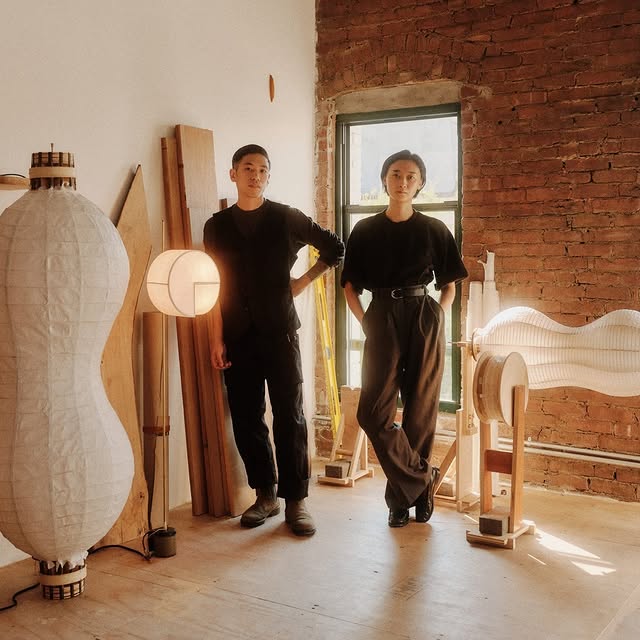
The partners in life Aaron and Irisa Na Kawabi never set out to be partners in business. After their 2014 graduation from the Parsons School of Design, where they met as students, Irisa worked as a product designer while Aaron focused on cabinetmaking, architectural fabrication and retail interiors. But when they married and moved into an apartment in Brooklyn’s Bedford-Stuyvesant neighborhood in 2022, they ended up making “almost everything we needed together, from cups to chairs,” says @irisa__na. One highlight was a piece they now call the Cascade Pendant, a ceiling light constructed from two interlocking pieces of American maple embedded with three ellipse-shaped lanterns crafted out of kozo, a highly prized mulberry-bark paper that they source from Shikoku, Japan. A year later, they decided to launch @kawabi, a collection of handmade lighting. The lights, which the couple describe as “beacons,” bear some resemblance to those designed by the midcentury Japanese American sculptor Isamu Noguchi, and to vernacular Japanese and Chinese lanterns. Instead of typical bamboo ribbing, however, the couple use rattan reeds, wrapping them around a collapsible wood structure. The resulting silhouettes are organic and irregular — a departure from traditional Asian craft, which prizes exacting symmetry. Tap the link in our bio to read the full story about the collection. Written by Alexa Brazilian (@lexbrazilian). Photo by Emiliano Granado (@quesofrito).

Rose Fournier, the Swiss French interior designer and owner of @tarabelmarrakech, the 10-room riad that opened in the Moroccan city in 2007, spent the past five years overhauling a 19th-century mansion in Lisbon’s Lapa neighborhood. Situated across a cobblestone street from the United States ambassador’s residence, @tarabellisbon is set to open next month behind a facade painted enamel blue in homage to Queluz Palace, built in 1747 for the first female ruler of Portugal. For her new hotel’s relaxed, elegant interiors, Fournier scoured French flea markets for antique furniture (“Everything Napoleon III is comfortable,” she says) to mix with extra-deep, French linen-covered couches along with trompe l’oeil bookshelves and birdcages by the painter Gonçalo Jordão. All nine rooms across four levels have views over the Tagus River, some extending to private terraces. A guests-only garden is bordered by jacaranda trees and there’s also a glass-tiled swimming pool, heated year-round. Tap the link in our bio to read the full story about the new hotel along with the rest of this week’s #TList recommendations. Written by Cynthia Rosenfeld (@cynthiaroams). Photos courtesy of Tarabel Lisbon.
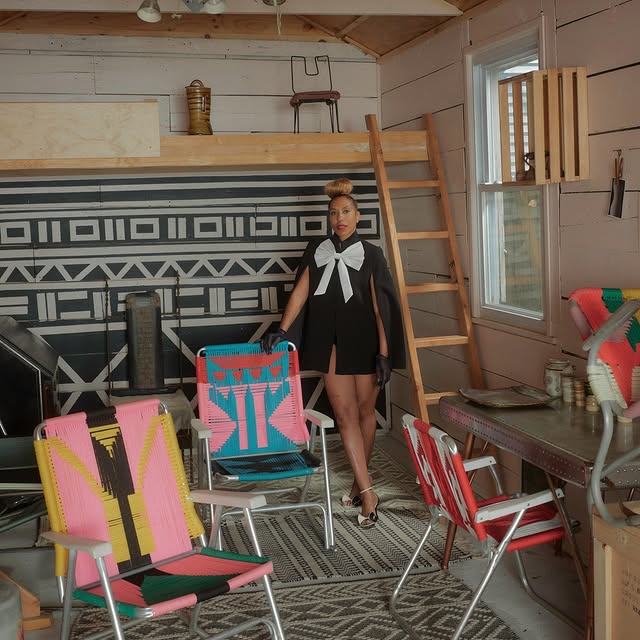
After walking away from the Black Eyed Peas, Kim Hill has been making art on her own terms. @alwayskimhill toured with the Black Eyed Peas for five years and contributed vocal hooks to tracks like “The Way U Make Me Feel” (which she co-wrote) and “What It Is,” both released in 1998. But in 2000, she parted ways with the band. During the pandemic, she longed for a creative outlet and found that weaving felt natural to her, almost akin to hair braiding, so she began making lawn chairs inspired by both her own collection of North African and Indonesian furniture and the aluminum-and-woven-plastic fold-up seats that her grandmother used for entertaining. Hill stripped four of those inherited chairs down to their frames and rewove them with water-resistant macramé in bright colors like lime and magenta. When a developer of the Rockaway Hotel in Queens ordered 27, Hill’s business, Hazel & Shirley, named after her grandmother and mother, was born. By 2022, Hill’s creations included vibrant wall hangings, as well as portraits of languid Black figures that she started painting after an art instructor advised her to capture not just what she saw but what she felt — an approach that reminded her of making music. Tap the link in our bio to read the full story, written by @emilylordi1. Photo by @mirandabarnes.
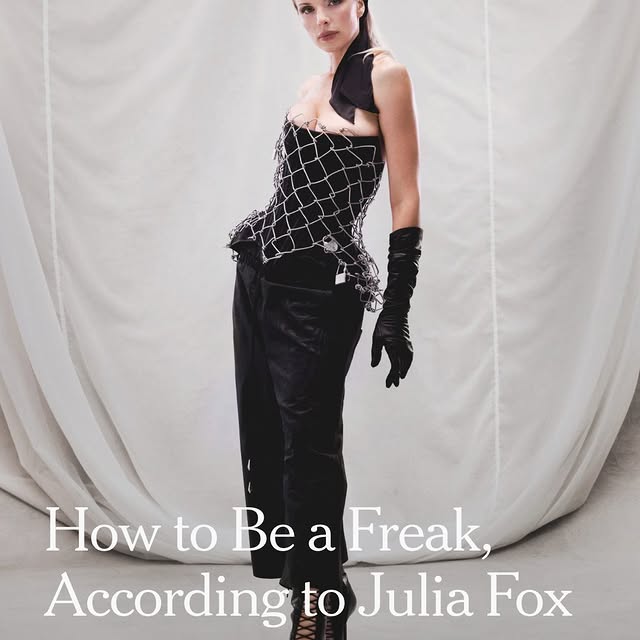
The writer and performer @juliafox has long seen herself as a freak. “I remember being in fifth grade [on New York’s Upper East Side] and being exhausted from trying to pretend to be normal all the time,” she told @tmagazine in an interview. Now, after coming into her own, she has a few tips for embracing all sides of yourself. Tap the link in our bio for her tutorial, part of T’s “Freak City” feature about the one-of-a-kind creative forces shaping New York today. Interview by Juan A. Ramírez (@itsnumberjuan). Photo by Justin French (@frenchgold).

Behind the scenes of our “Freak City” shoot, where @coleescola came with Mickey ears, Julio Torres (@spaceprincejulio) wore a coat adorned with skyscrapers and @missmaamshe was dressed for business with a pinstriped skirt suit. In our latest issue — online now and in print this weekend — we celebrate the one-of-a-kind creative forces making New York more unique than ever before. Tap the link in our bio to read the full feature. Video directed by @eleanorschmitt.
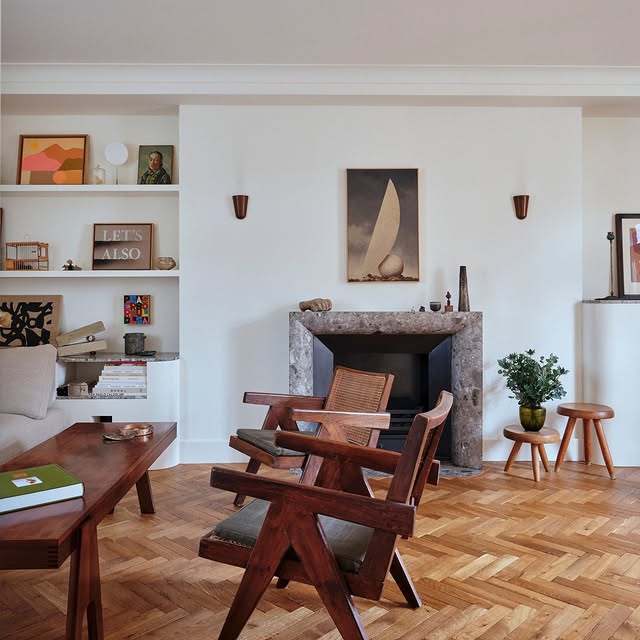
Pass through the front door of @_mathieuparis_’s three-bedroom apartment, on the top floor of a brick four-story Victorian building in London’s Marylebone neighborhood, and you might think that you’ve inadvertently wandered into an art gallery rather than the home of new parents and their toddler daughter. But given that Paris is the global sales director of White Cube, the international gallery with two outposts in London, perhaps it’s no surprise that even the foyer, though paneled in varnished plywood and sparingly furnished, holds prized pieces. Down the corridor in the living room, built-in shelves display more treasured objects, from 19th-century Japanese kintsugi-mended bowls to paintings by Alvaro Barrington and Damien Hirst. Paris and his husband, the financier Razid Kalfane, bought the 1,700-square-foot apartment in 2020. The couple spent the following two years doing a gut renovation with the help of the Egyptian architect @tarekshamma. Among the first tasks was to replace the flooring (“old linoleum over old floorboards,” says Shamma) with reclaimed herringbone oak parquet. Tap the link in our bio to see more of the London apartment where family life and precious artworks coexist. Written by Gisela Williams (@giselaatlarge). Photos by @harrymitchell.
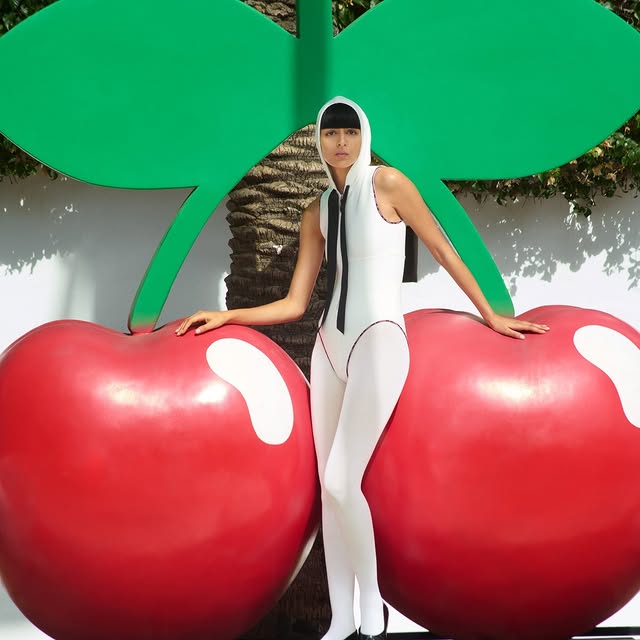
Take a vacation — whether mental or actual — in clothes designed for a good time. Tap the link in our bio for more of the season’s most joyful pieces. Photos by @johnnydufort. Styled by Imruh Asha (@imruh). Model: @noraattal.

How did New York become the freakiest place on earth? “Freaks are scroungers, thrifters, salvagers; they’re unmatched in their ability to repurpose the discarded, to find value in things — and in people — that it sometimes seems nobody else wants or esteems,” writes Mark Harris (@markharrisnyc) in T’s latest issue. “They are, by nature, retrievers and rescuers: of things, of people and, in New York, of neighborhoods.” As the official history of New York has unfolded — charted and graphed in growth arcs and real estate booms and the maneuverings and depredations of the city planner Robert Moses and the stampeding forces of money culture and conspicuous consumption — freaks have always remained essential to the city’s identity because, collectively and cumulatively, they’re the authors of the counternarrative. They write between the lines, telling stories that some would prefer to see expunged from the public record. Freaks, in short, have always helped make New York the city we want it to be. T’s “Freak City” feature is a celebration of those who’ve proudly populated, redefined and expanded the shadowlands of New York City — a metropolis that, for a century or more, has in turn reshaped and reimagined itself to accommodate them. Tap the link in our bio to read the full story. Pictured here: The artist Jean-Michel Basquiat. Photo: © Paige Powell (@paigepowellofficial), Paige Powell Archive. The D.J. and producer Honey Dijon and the writer and performer Ladyfag. Photo: Billy Farrell Agency/Shutterstock. The writer and musician Patti Smith. Photo: David Gahr/Getty. The writer Quentin Crisp. Photo: @wolfgangwesener / @wowephotography.
Similar Influencers

Gilroy CA

Crazy Products

By Bombay Hardware House

designboom magazine

Leo Taps and Fittings

H O M E | D E C O R

En Style

Rebuilt

Olcay Yapi Azerbaijan

agc_mm

DOLCE | Bath Accessories

Bohemian Decors

Jill Koch | Cleaning • Home Organization • Hacks

Radha Krishna

Eclectic Territory

Akansha

Vannistuudio

Shweta jaiswal

Amazon accessories | Home products

Reback’s | Family-Owned | Plumbing Parts & Fixtures

Suzan Valois

ROIS BATHWARE

My Boho Interior

Unique boutique of cuteness

Liz Richards | Daily Original Vids

Lâl Vural

Diet Prada ™

Obsolete Inc

Elaina Zinke
